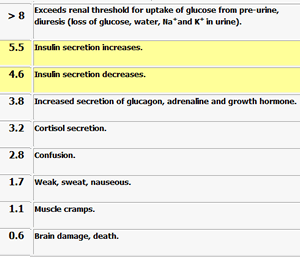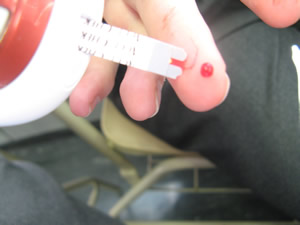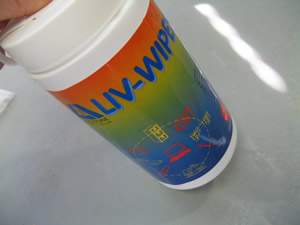Blood sugar levels, exercise and diet.
Blood glucose levels remain surprisingly steady despite exercise and dietary intake of glucose. Even when dietary sugar intake is low blood levels remain within safe parameters.
The diagram on the right shows the blood sugar levels in mmols/litre and the consequences of such concentrations.
Looking at this diagram suggest a reason why diabetics may suffer from dehydration.
What is insulin ?
At what blood sugar levels is it likely to be released into the blood?
What is diabetes?
Glucagon is released at levels below 4.6 . What do you think this hormone will do?
What are the limits in which the blood sugar is maintained?
What is the difference between low GI and high GI foods?

The aim of this activity is to determine the rate of increase in blood sugar concentration after a carbohydrate meal and compare complex(starch) and simple(sugar) carbohydrates.
Materials :
- Blood glucose meter
- Sugar
- Potato whip
- Plastic cups
- Warm water
- Electronic balance
- Alcohol wipes
- Lancets
- Gloves and bleach solution
- Container for the disposal of lancets.
All students must wear gloves and be familiar with the school's policy on handling blood and body fluids. The number of students testing themselves should be kept to one per group. In this case three participants measure their blood sugar level. This enables better management of the class. Students participating in testing should conduct the test on themselves and dispose of any lancets immediately in a "sharps container" provided.
.
Measure 40 grams of sugar into a cup of warm water.
Measure 40 grams of potato whip into an identical cup of warm water.
One participant now drinks the sugared water over 5 minutes while another participant eats the potato whip over a period of 5 minutes.
A third participant just drinks an equal volume of warm water.





Some results are obtained and plotted on the left.
What do the results show about blood sugar levels when starch and sugar are ingested?
Explain the results.
What is meant by low GI and high GI food?
What do you think will happen after 35 minutes?
What hormone is secreted into the blood as a result of the sugar uptake and what effect will it have?
Will the participant that ingested the sugar suffer dehydration? Explain
The blood sugar levels, in mmol/L of a student were measured before, during and after exercise. The following results were obtained

The student ran hard for 12 minutes . He than stopped and relaxed. At the 28 minute mark he took a blood sugar reading and then drank 375 mL of sugared soft drink. Four minutes after he stopped running he craved chocolate.
1) Why has the blood sugar fallen during the first 8 minutes of exercise?
2) What has happened to increase the blood sugar level after 8 minutes of exercise?
3) Where does the sugar to increase the blood sugar level, after 16 minutes come from?
4) What hormone is released during the first four minutes of exercise?
5) What hormone is released at the 32 minute mark?
6) At the 28 minute mark the student craved sweet foods. Why?